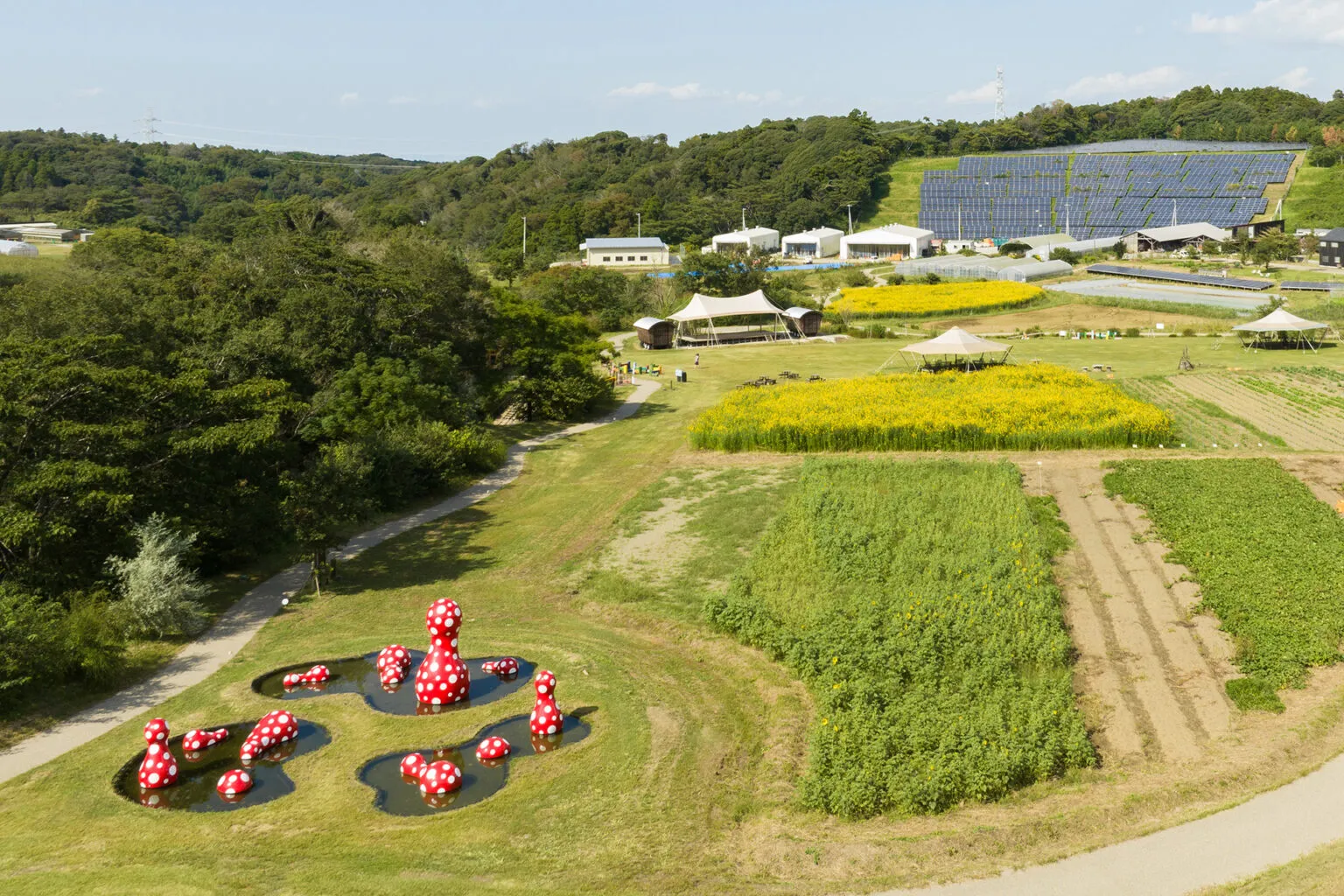
Things to Do | Visit Chiba | Latest update:2025/02/25
Just about 90 minutes from central Tokyo is a place known as Kurkku Fields where we can get in touch with our roots and take pleasure in the true fruits of the earth. Art, agriculture, and country-style comfort have been brought together here in the hills of central Chiba, attracting visitors looking to play, learn, dine, and even enjoy an overnight stay. Kurkku Fields is the brain-child of Japanese musician Takeshi Kobayashi, who for the last 20 years has joined the fight to solve environmental issues and influence change for a better world.
From its humble origins as a small organic farm, Kurkku Fields has evolved to a site where visitors can experience a world in which humans connect meaningfully with their environment and food sources. Kurkku Fields offers you a chance to spend your time here in a number of ways, including: admiring clever works by artists like Yayoi Kusama, dining at the farm-to-table restaurant and bakery, trying your hand at farming experiences, and staying the night in a “Tiny House Village” trailer or one of the “cocoon” villas.
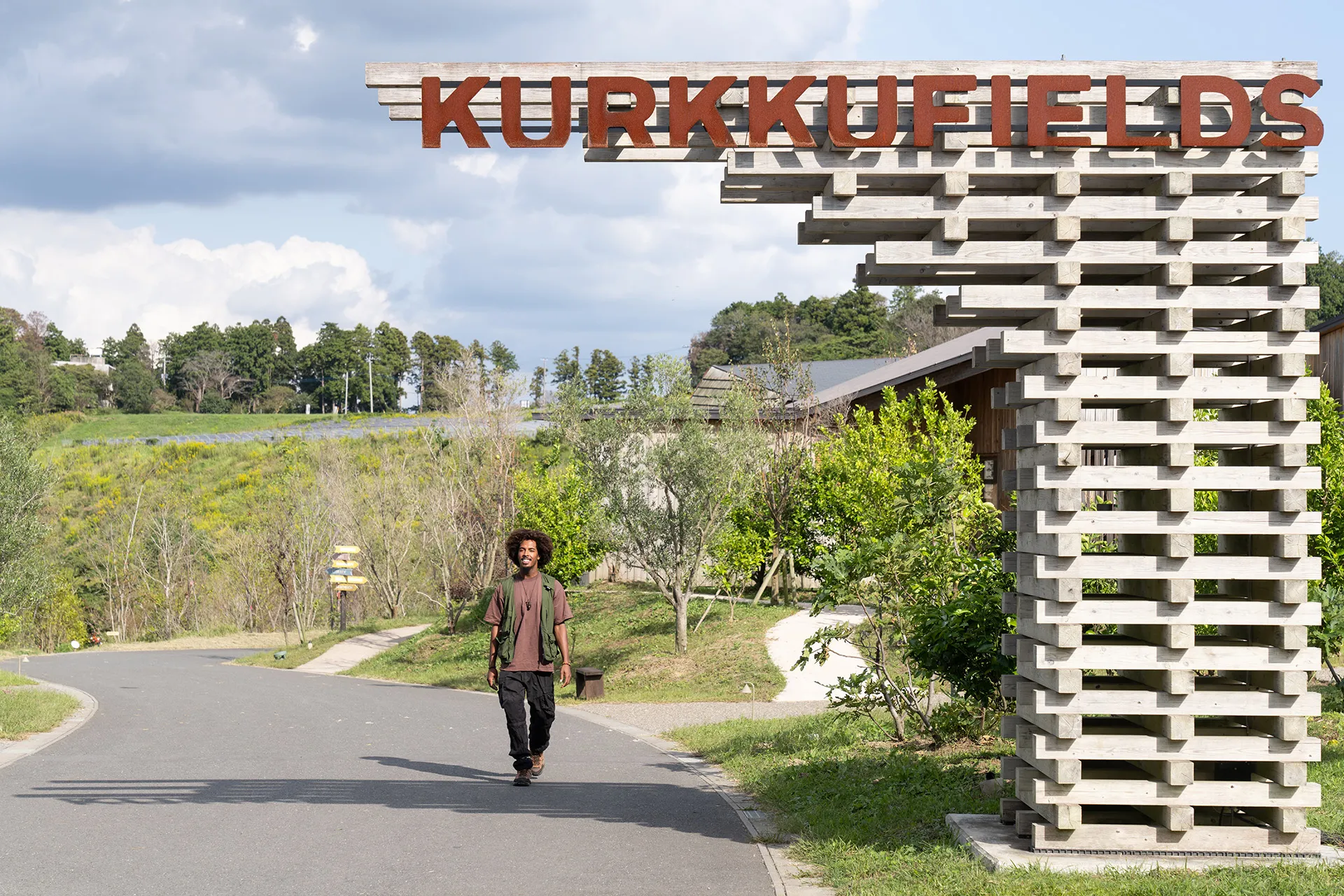
The Visit Chiba team took a trip to Kurkku Fields in October 2023 and we’re excited to share our experience with you. First we’ll introduce what makes Kurkku Fields such an eco-friendly and forward thinking space, then we’ll detail how we spent our time here.
One thing to note: We found that if you’re coming by car from the Tokyo area, Kurkku Fields makes for a great day trip destination. However, if you’re an overseas visitor or resident of the Tokyo area who doesn’t have access to a car, we suggest staying the night here to make the most of the experience. For detailed information about how to get here by bus from Tokyo, please see the bottom of the page.
In a world where societies have found themselves dependent on unsustainable practices, Kurkku Fields serves as a beacon, leading the way toward a future where people live more symbiotically with nature. That starts with the dedicated staff who care for the organic produce gardens and ethically-raised livestock, providing the restaurants and shops here with a direct food source. Modern technology also plays a role in the effort to keep Kurkku Fields self-dependent and off-the-grid, like their “Bio Geo” filtration system which makes use of wastewater to produce natural fertilizers, and the massive solar farm that supplies 80% of their power needs (as of 2023). For a closer look at how these systems operate, guided tours are on offer to take you all around the premises, even to areas that are normally off-limits to the general public.

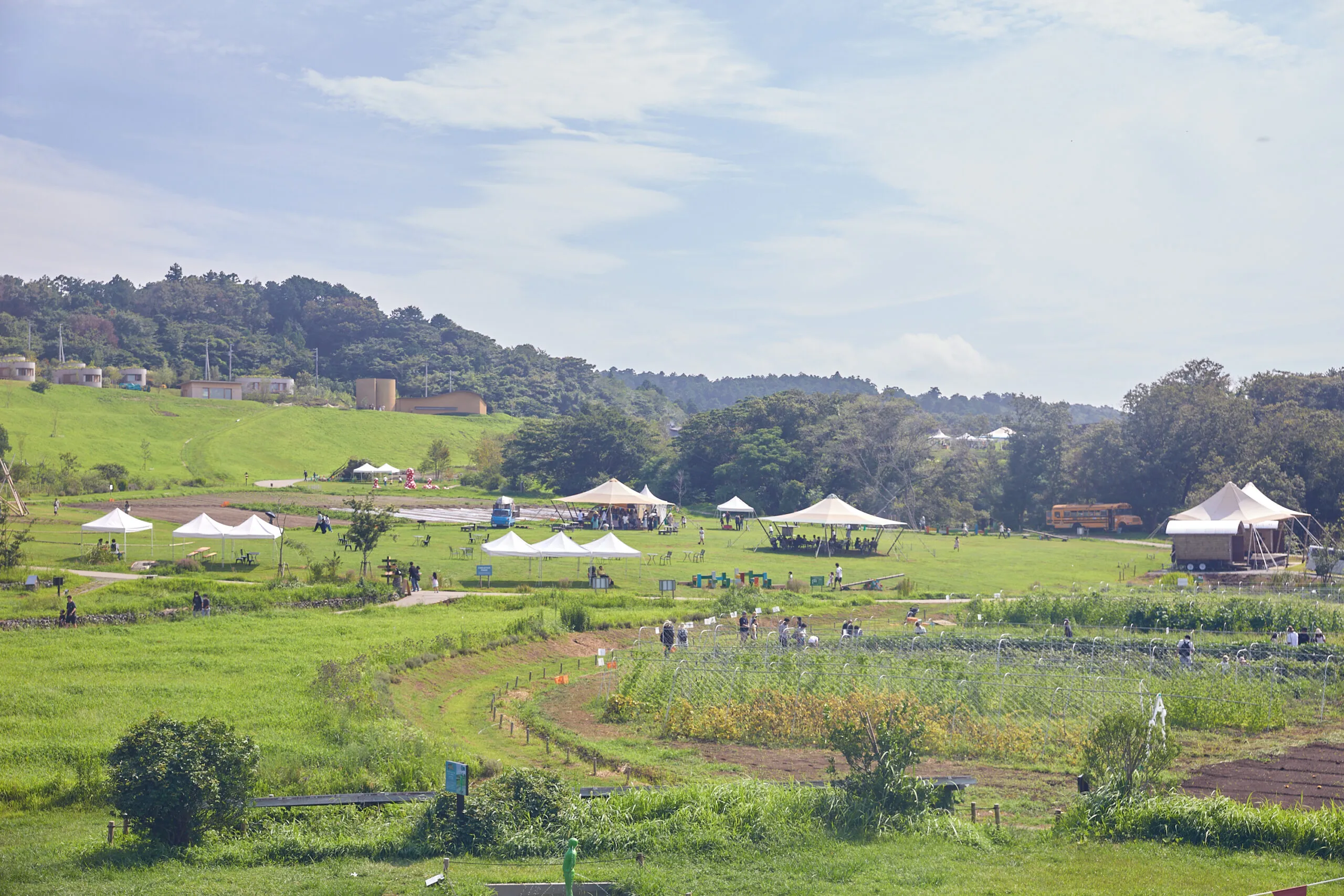
Special events and programs are also held here to help visitors immerse themselves in the Kurkku Fields ecosystem, from pizza making workshops to interactions with the livestock. On the day we visited, we got a chance to help harvest crops alongside the head agriculturist, Mr. Itoh. Upon chatting with Itoh-san, we learned that he’s worked here since Kurkku Fields was first founded. He recalled how things started here as just a simple farm, but now the complex has evolved to a place where visitors can experience the whole farm-to-table process. He told us how it brings him a sense of fulfillment seeing people enjoy the fruits of his labor, and it’s especially rewarding when he helps children learn the joys of partaking in the process themselves.
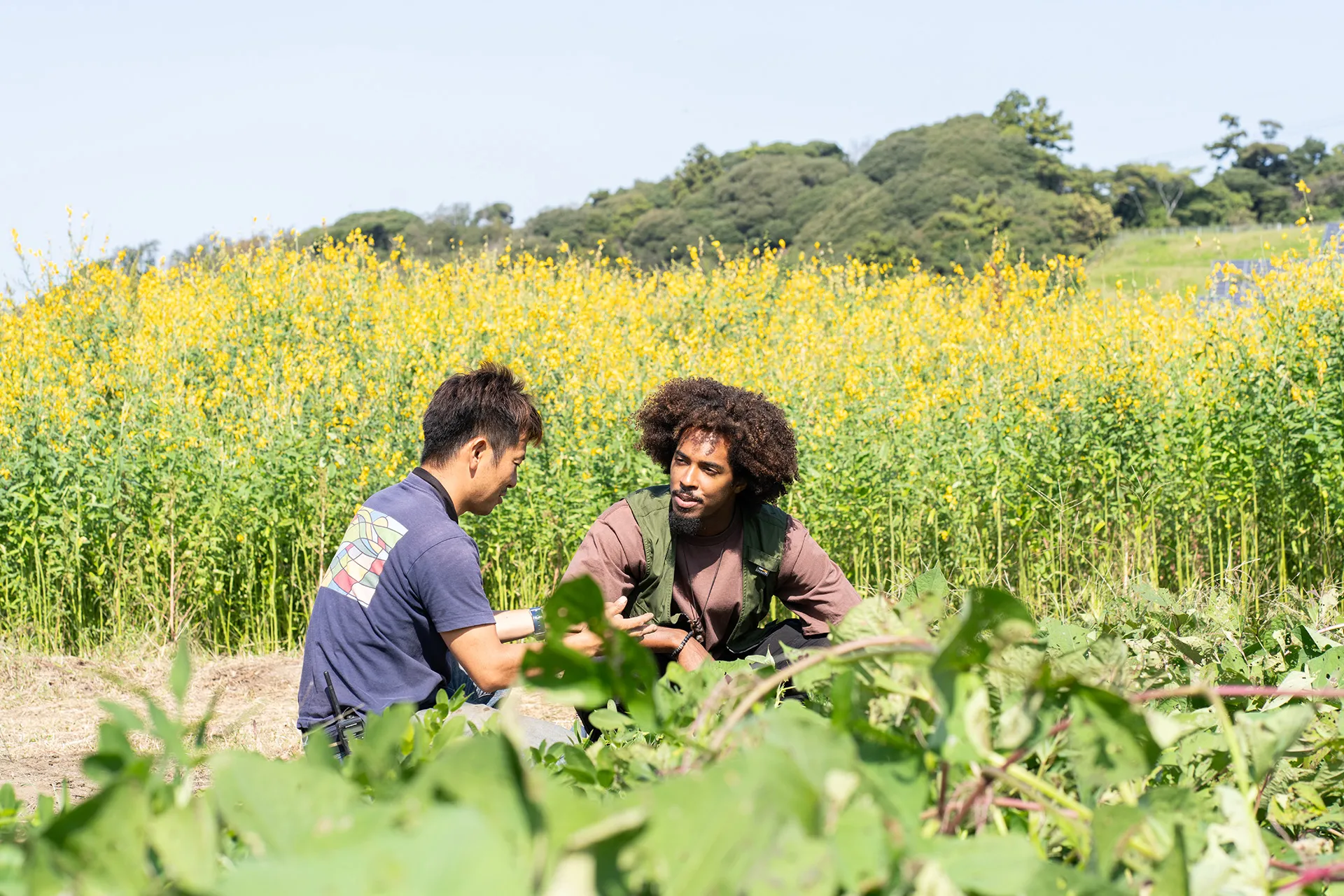
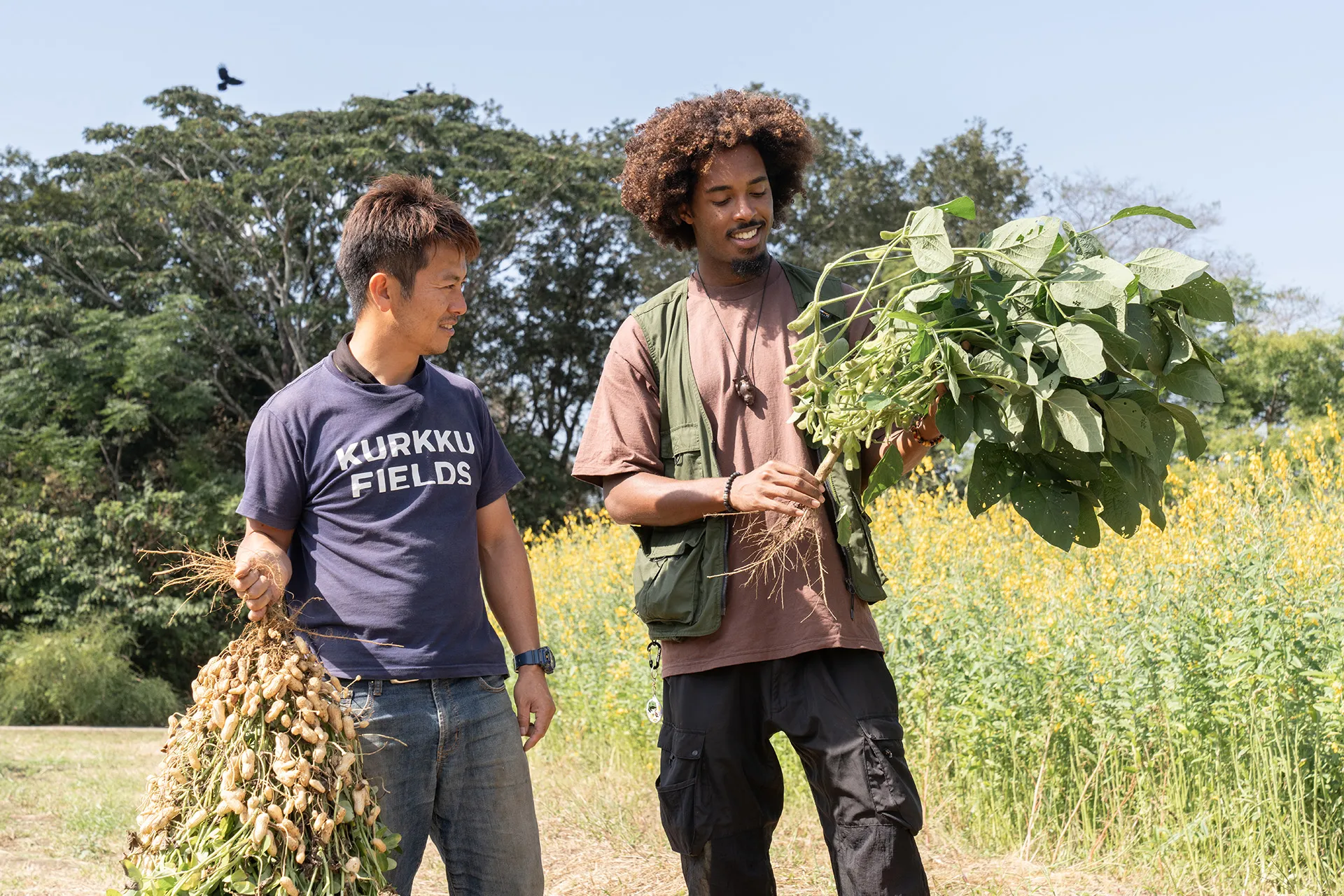
After our harvesting experience, we took a walk around more of the property. One of the first things that catches your eye here is the stunning installation “GUIDEPOST TO THE NEW WORLD” by Yayoi Kusama. Kurkku Fields’ design and art guide, Ms. Sato, was with us as we approached the installation, and explained to us that it serves as a demarcation between the buildings that greet you as you enter Kurkku Fields, and the more natural spaces found deeper within the grounds. As you explore beyond there, you’ll be greeted by various other works, including the mysterious “Gaping Hole Secret” by Sebastian Masuda, a large wooden cone found in a small forest with a stunning surprise awaiting you inside.
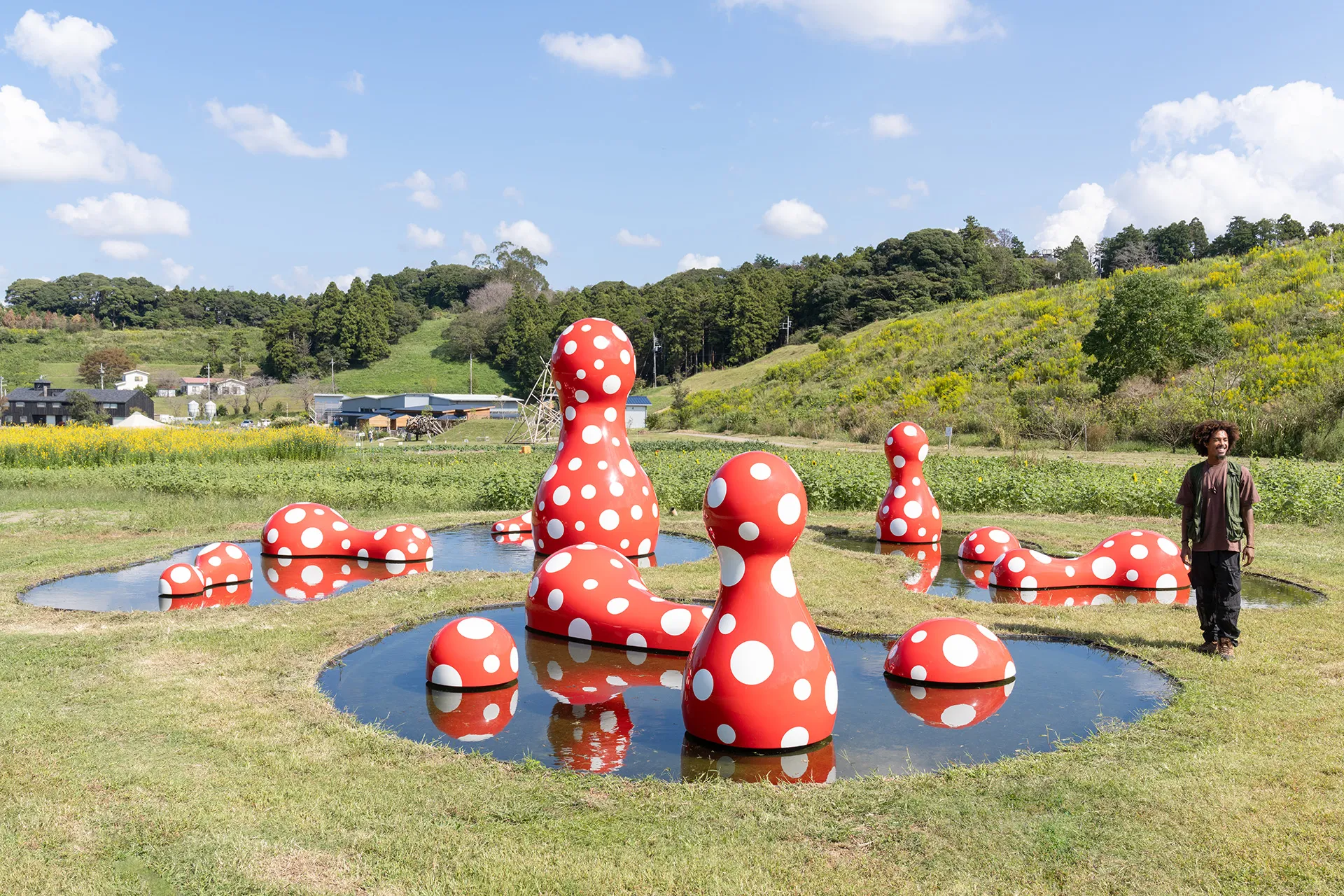 GUIDEPOST TO THE NEW WORLD
GUIDEPOST TO THE NEW WORLD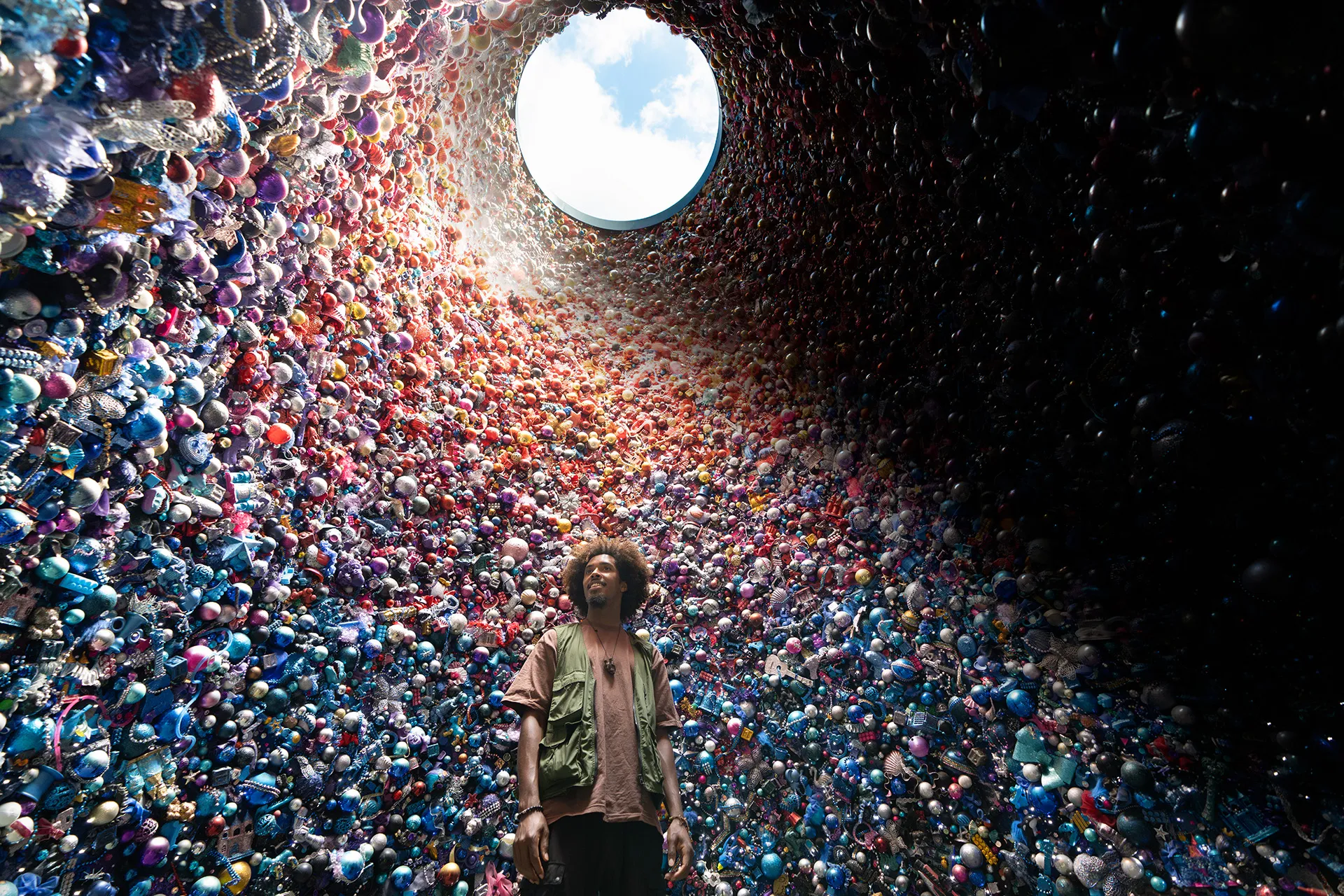 Gaping Hole Secret Sebastian Masuda
Gaping Hole Secret Sebastian MasudaThe welcoming, fun environment here beckons you to be a part of it, and it’s only natural you’d want to stay a bit longer. You have a couple options for lodging here, one being a little more rugged, and the other more lavish. The rooms at the “Tiny House Village” are found within small trailer houses, providing an experience that recreates the feel of camping. The “cacoon” villas, on the other hand, are a bit more luxurious, perched up on a hillside overlooking the entire grounds. Guests of either accommodation can also make use of the stunning “Library in the Earth,” a cozy reading nook cleverly built into a small hillside.
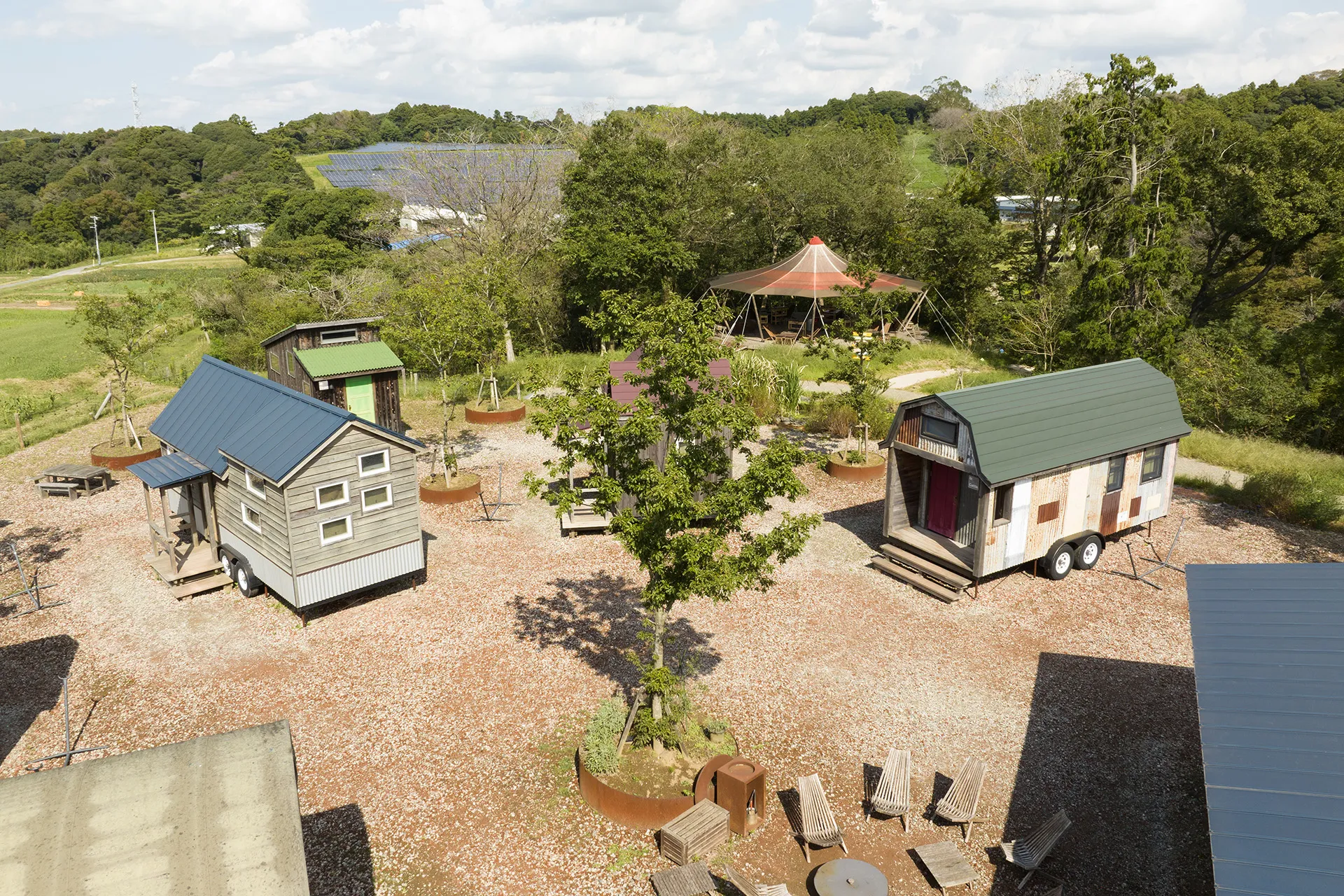 Tiny House Village
Tiny House Village
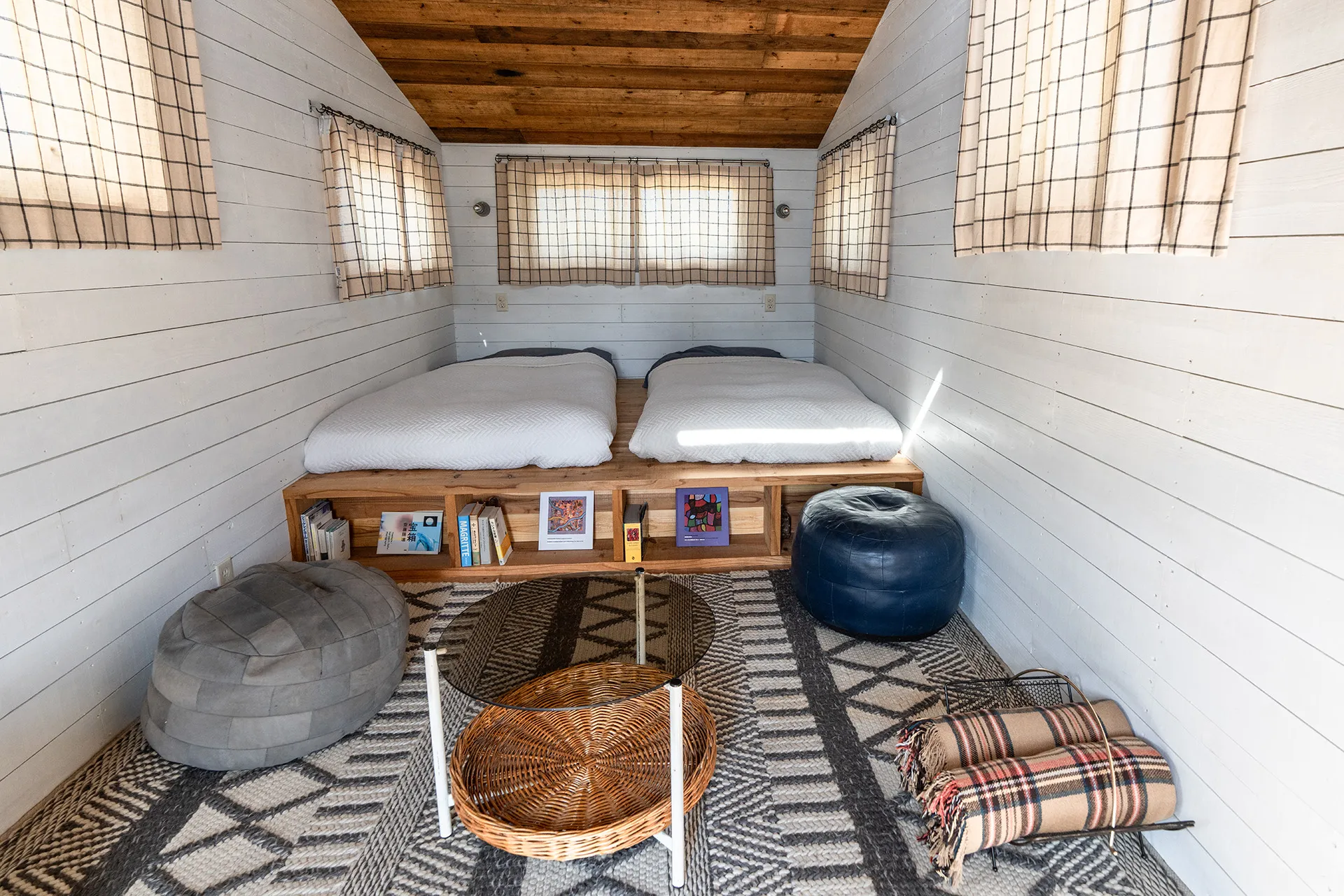 Inside one of the trailers
Inside one of the trailers
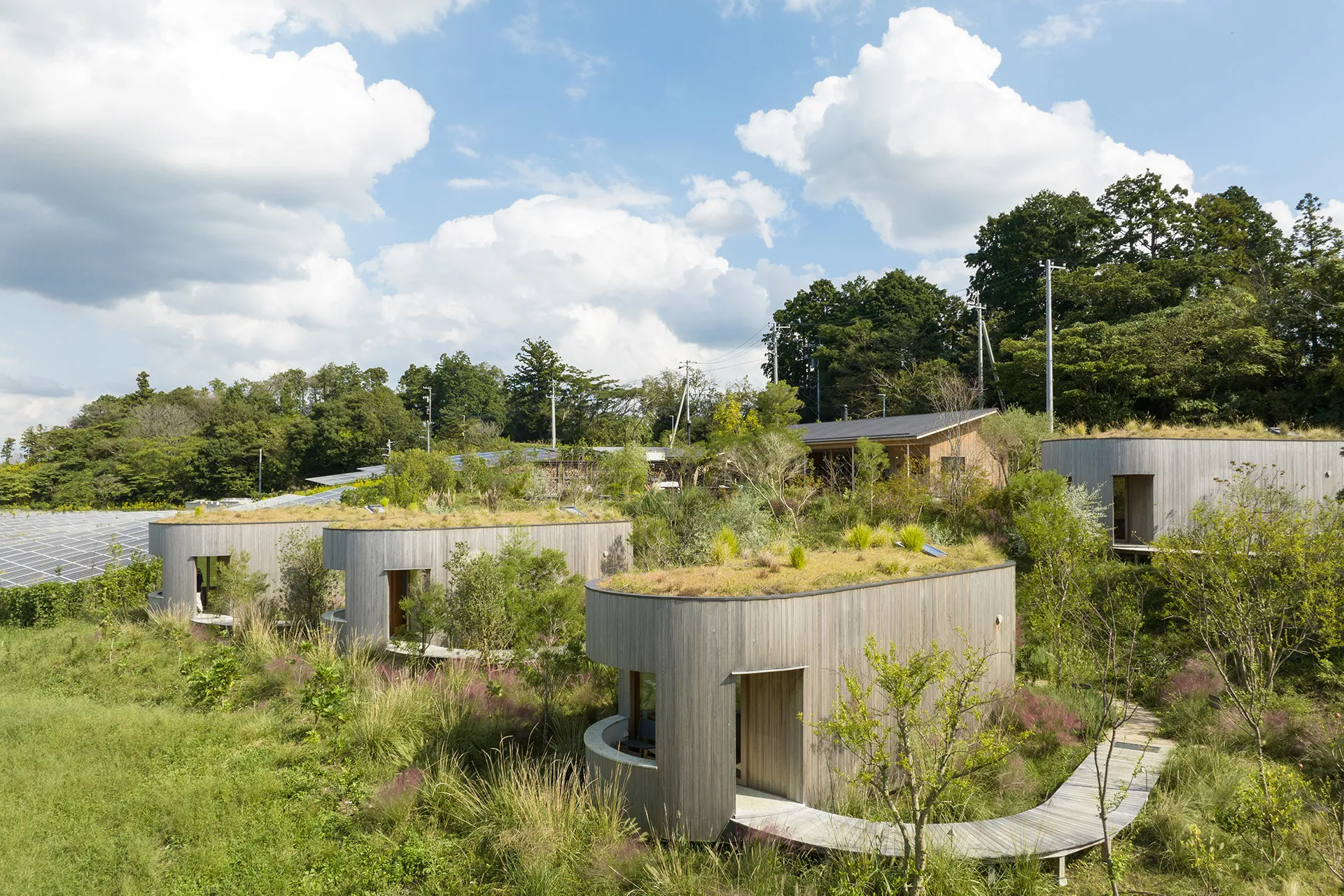 cocoon
cocoon
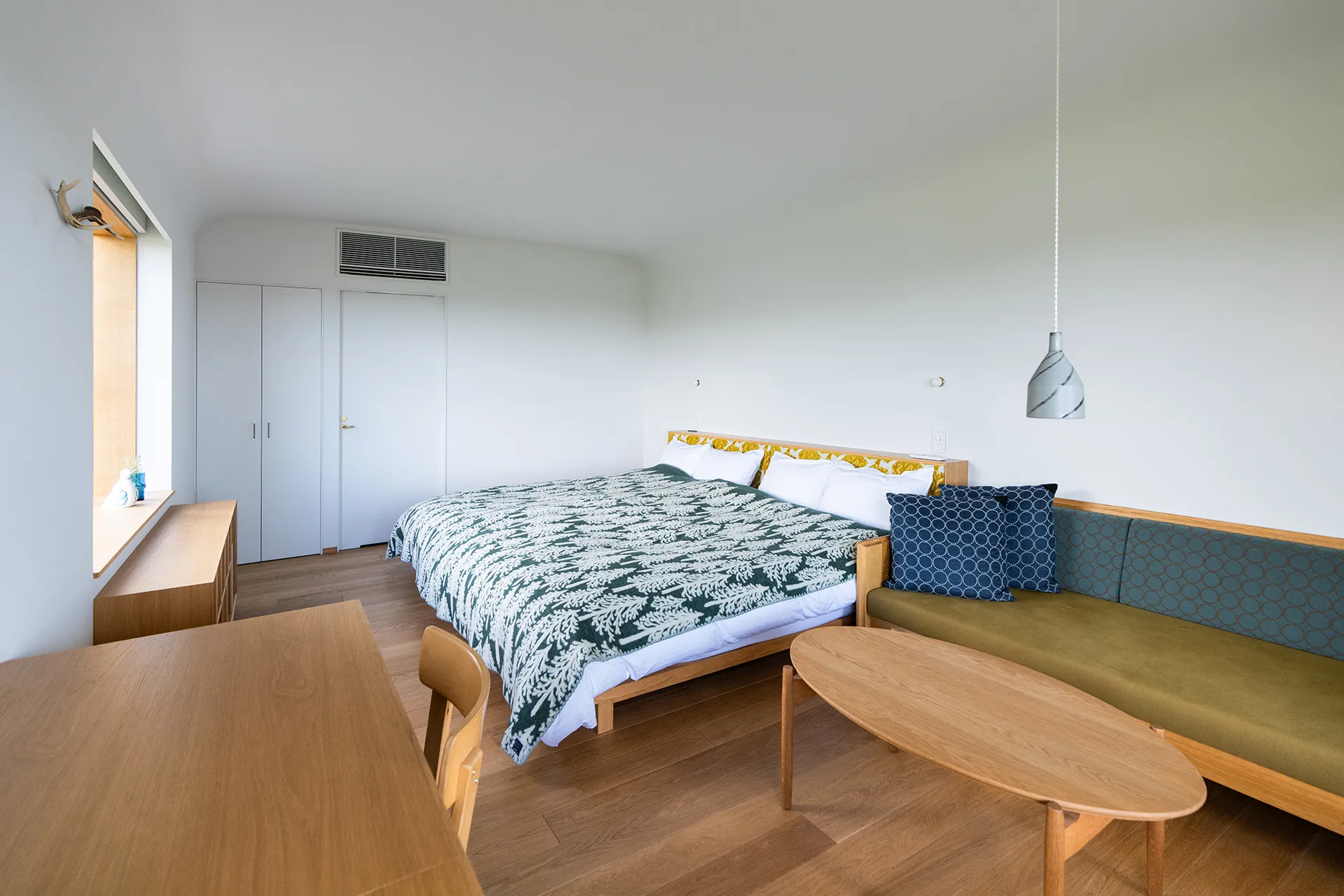 Inside one of the villas
Inside one of the villas
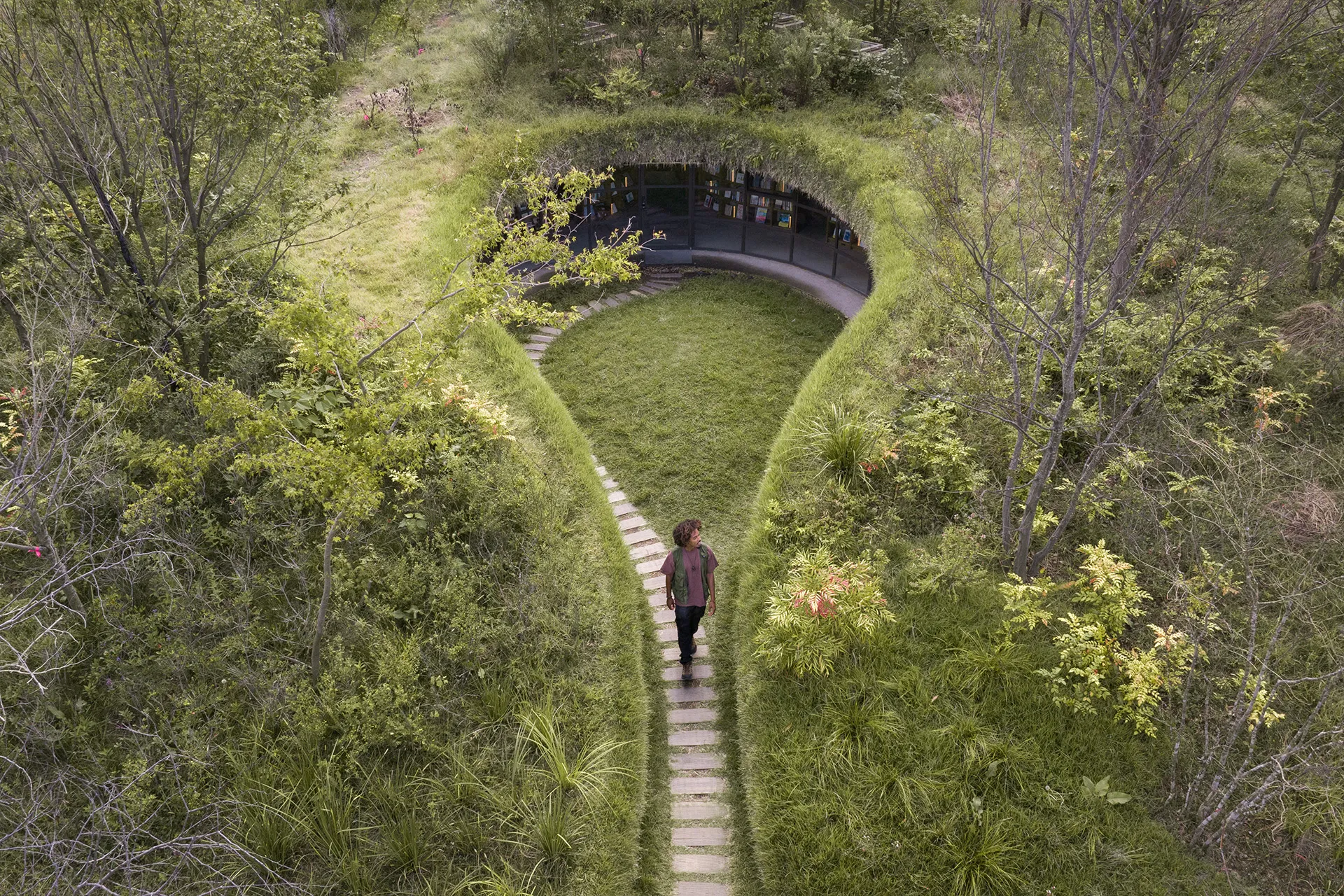 "Library in the Earth"
"Library in the Earth"
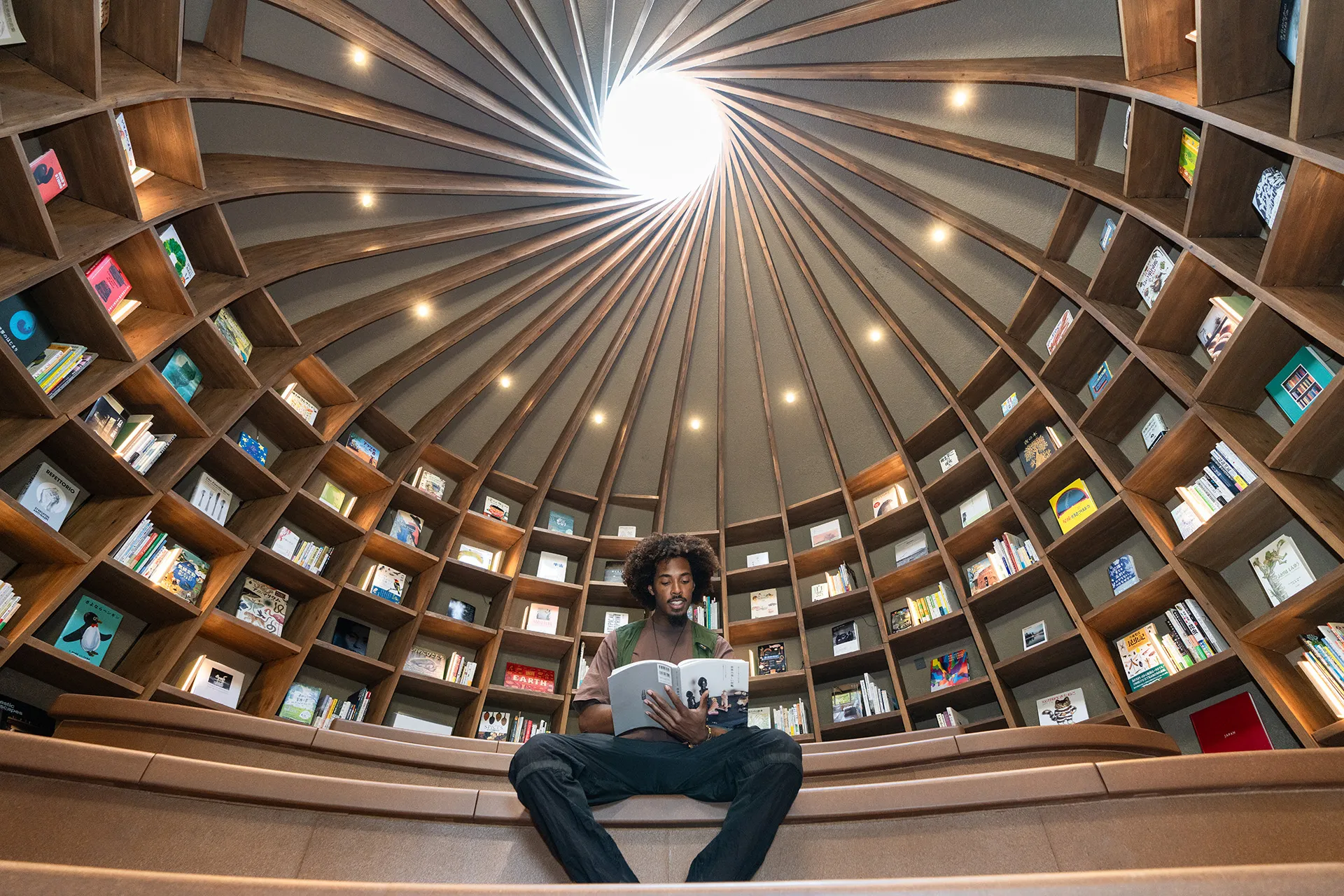 Library interior
Library interior
As we talked more with Sato-san, the essence of Kurkku Fields started to become clearer. Much like how diversity fuels a thriving natural ecosystem, the community here finds strength in bringing together a variety of human endeavors. Ms. Sato explained “There are not only staff like me who work with the art, but there are also professionals here with backgrounds in agriculture, the culinary arts, architecture, and hospitality. It’s a dynamic environment which lends itself to new discoveries every day.” At last, we entered the restaurant and took our seats for lunch. As we reflected on our experiences and conversations from the morning, we found ourselves appreciating the collective effort it took to create the meals placed on our table and the shared communal space around us. Moreover, we got to feel like we, the visitors, were also a piece of that rich tapestry.
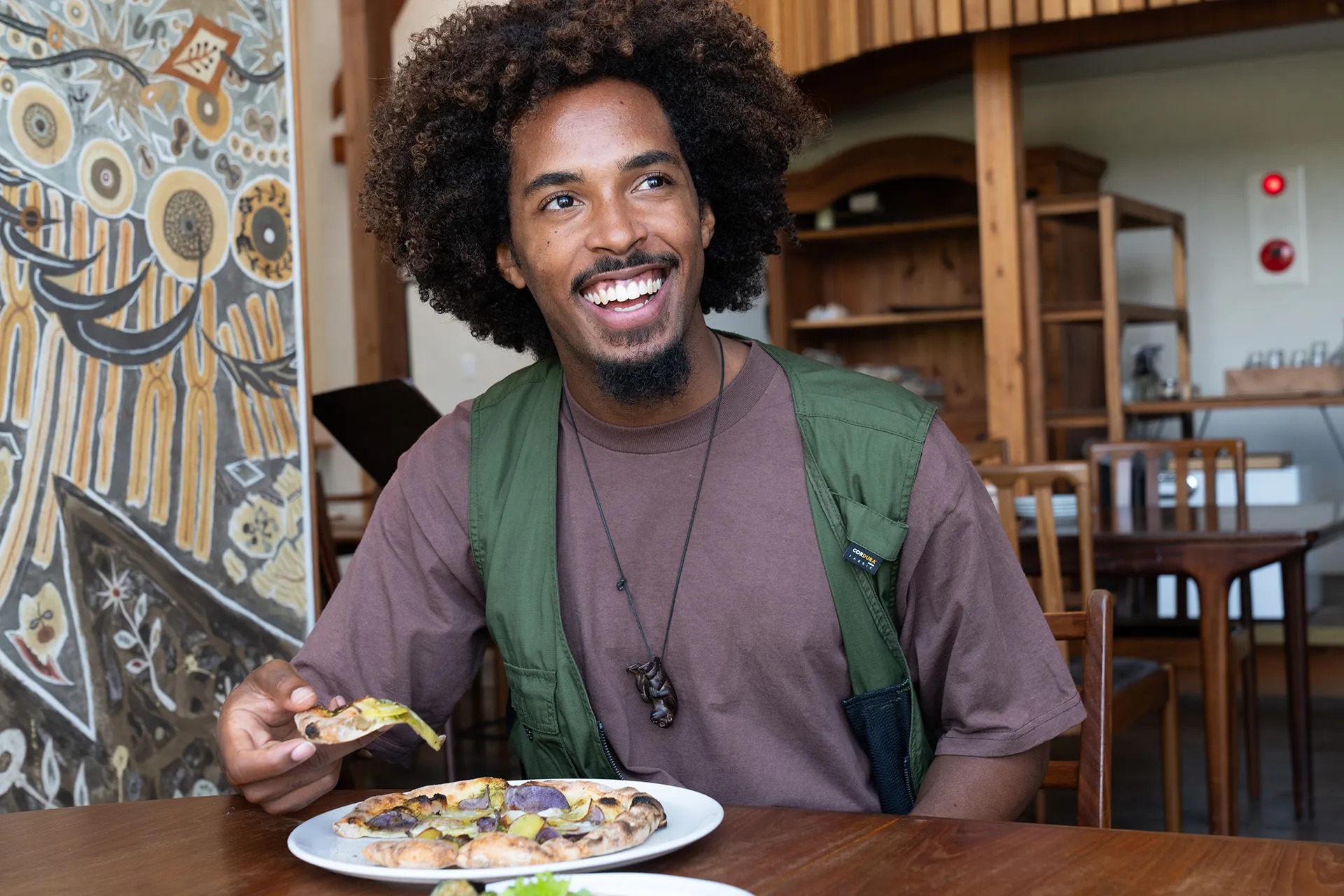
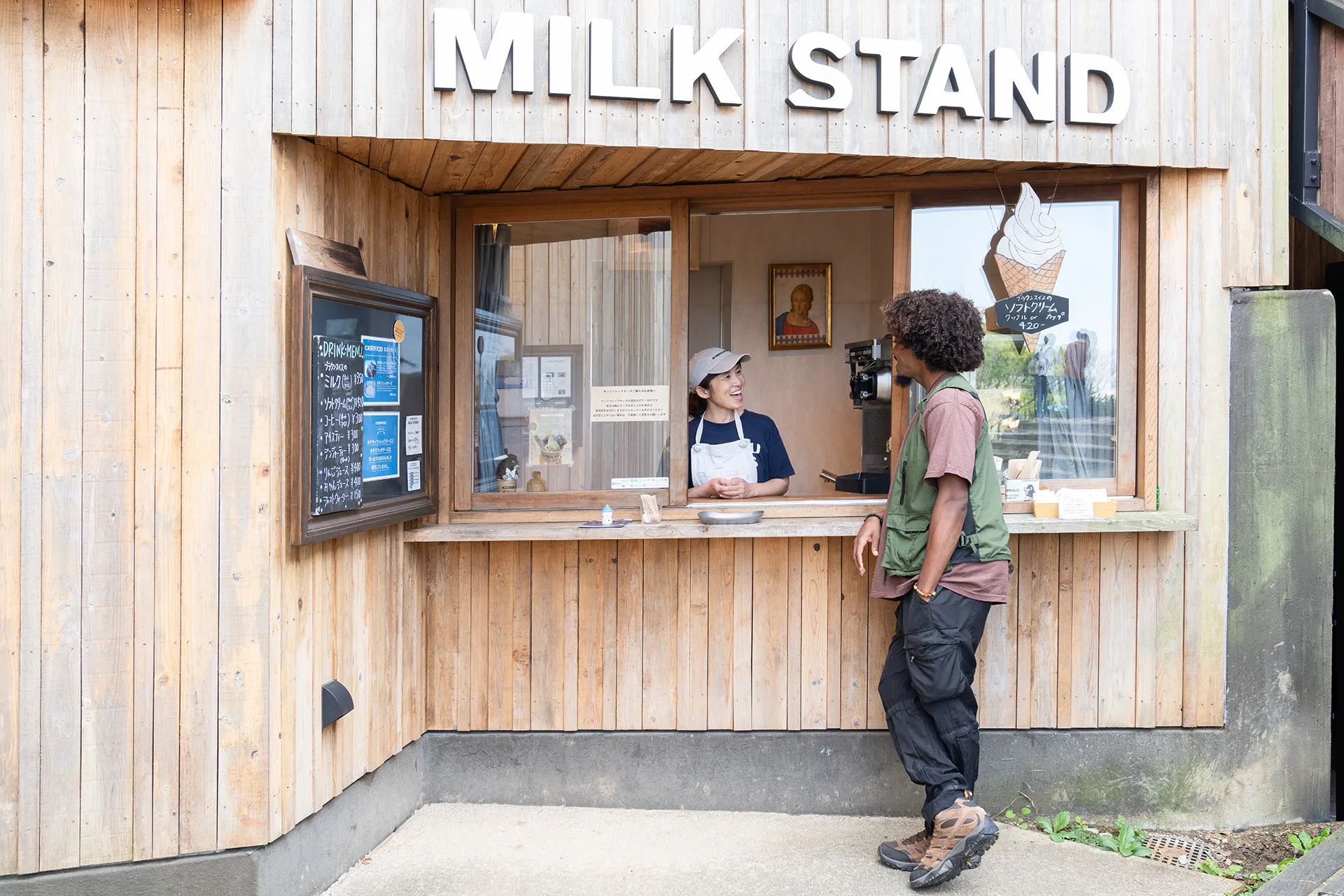
BUS ACCESS FROM TOKYO STATION (as of December 2024)
Six daily Tokyo-Kamogawa Line highway buses run to Kurkku Fields from the Bus Terminal Tokyo Yaesu (Tokyo Station).
Other Tokyo-Kamogawa Line buses departing from Bus Terminal Tokyo Yaesu (Tokyo Station) run more frequently throughout the day, with the closest stop to Kurkku Fields being the Kazusa ARC bus stop. From the Kazusa ARC bus stop, it’s about a 30-minute walk or about a 5-minute taxi ride.
2503 Yana, Kisarazu City
(30 minutes by bus from JR Kisarazu Station. Get off at the KURKKU FIELDS Iriguchi (entrance) bus stop. The park is a 10-minute walk from the bus stop. There is also a highway bus that departs from the Yaesu bus terminal at Tokyo Station, and is about a 90-minute ride.)
+81-438-53-8776
Accessibility